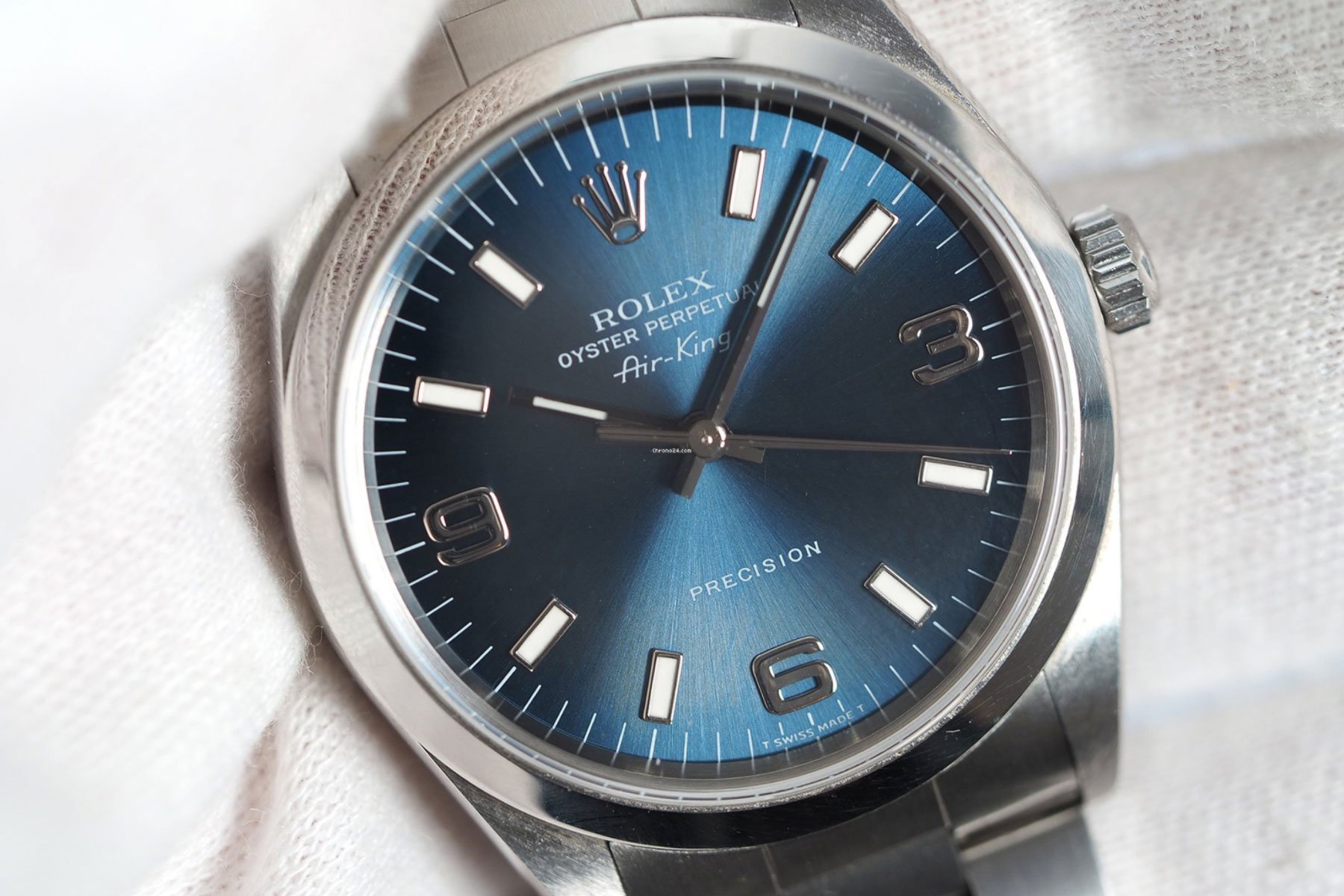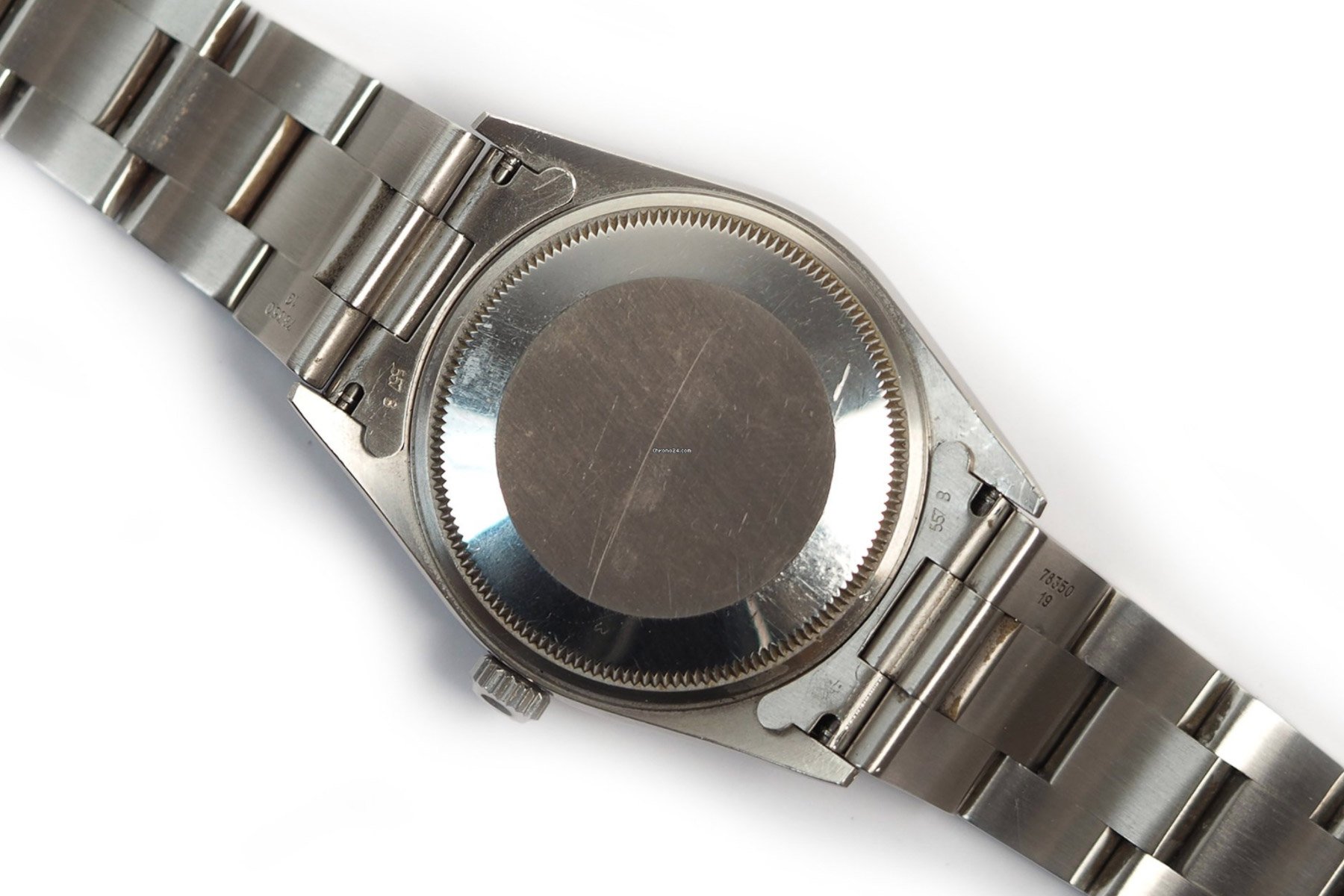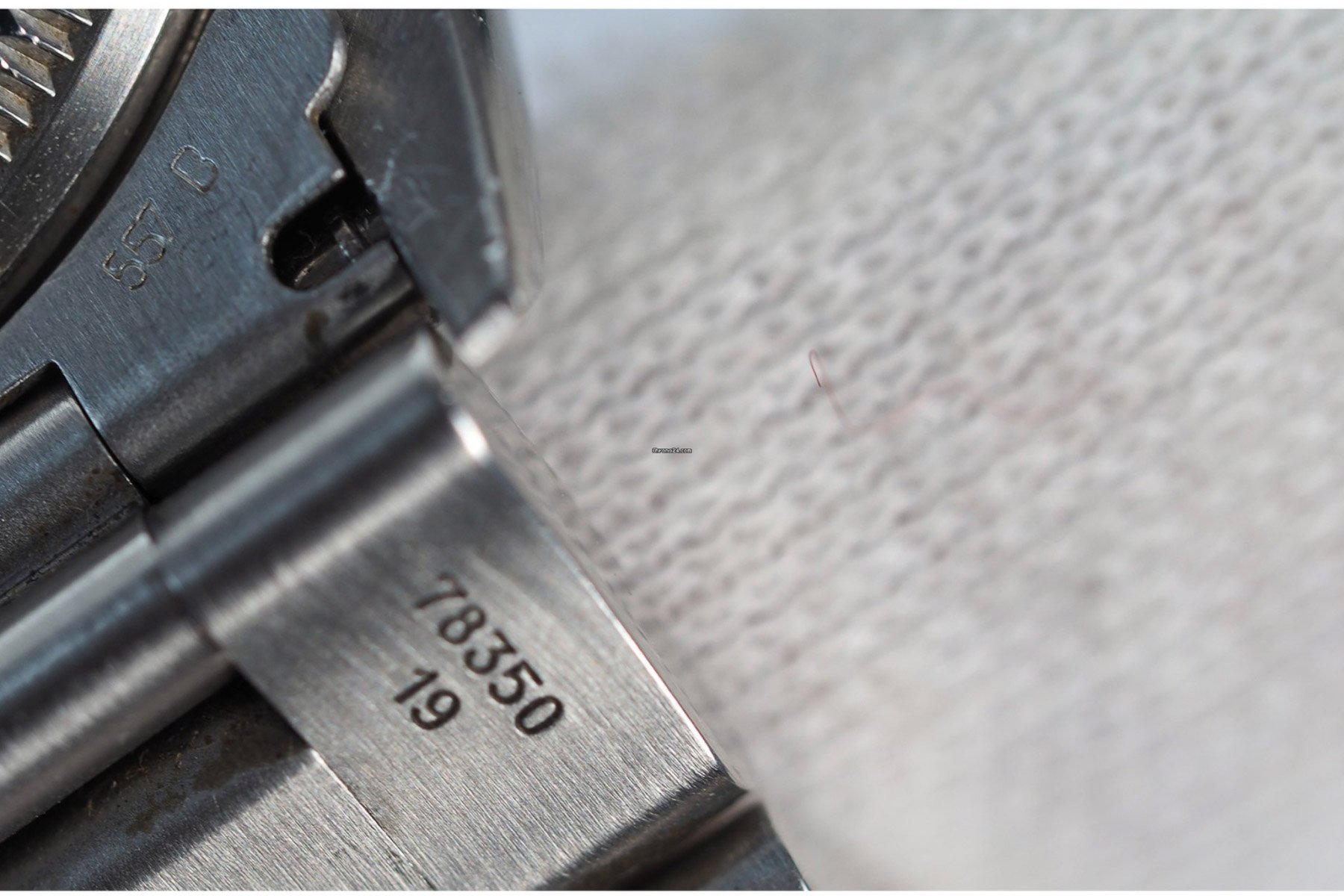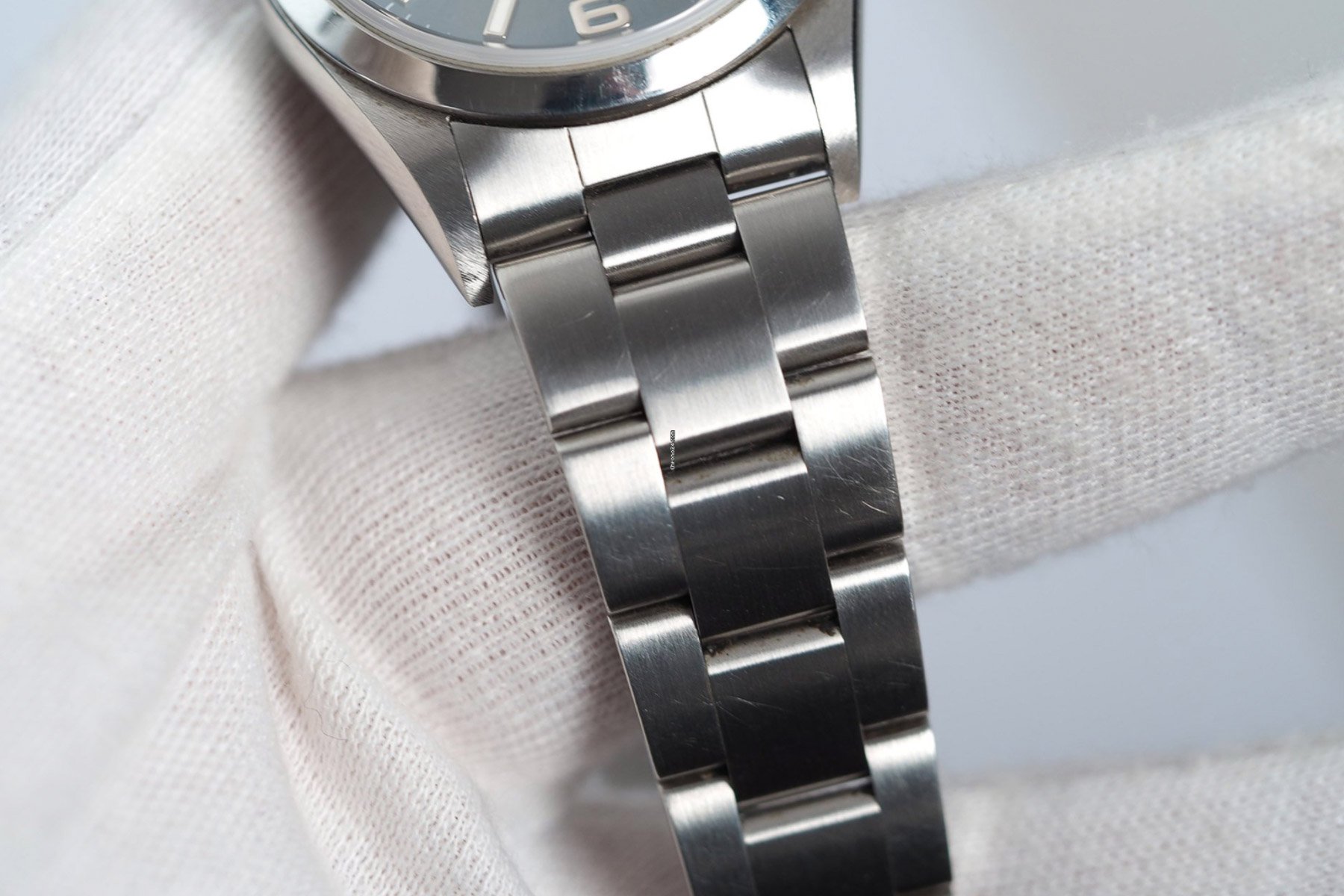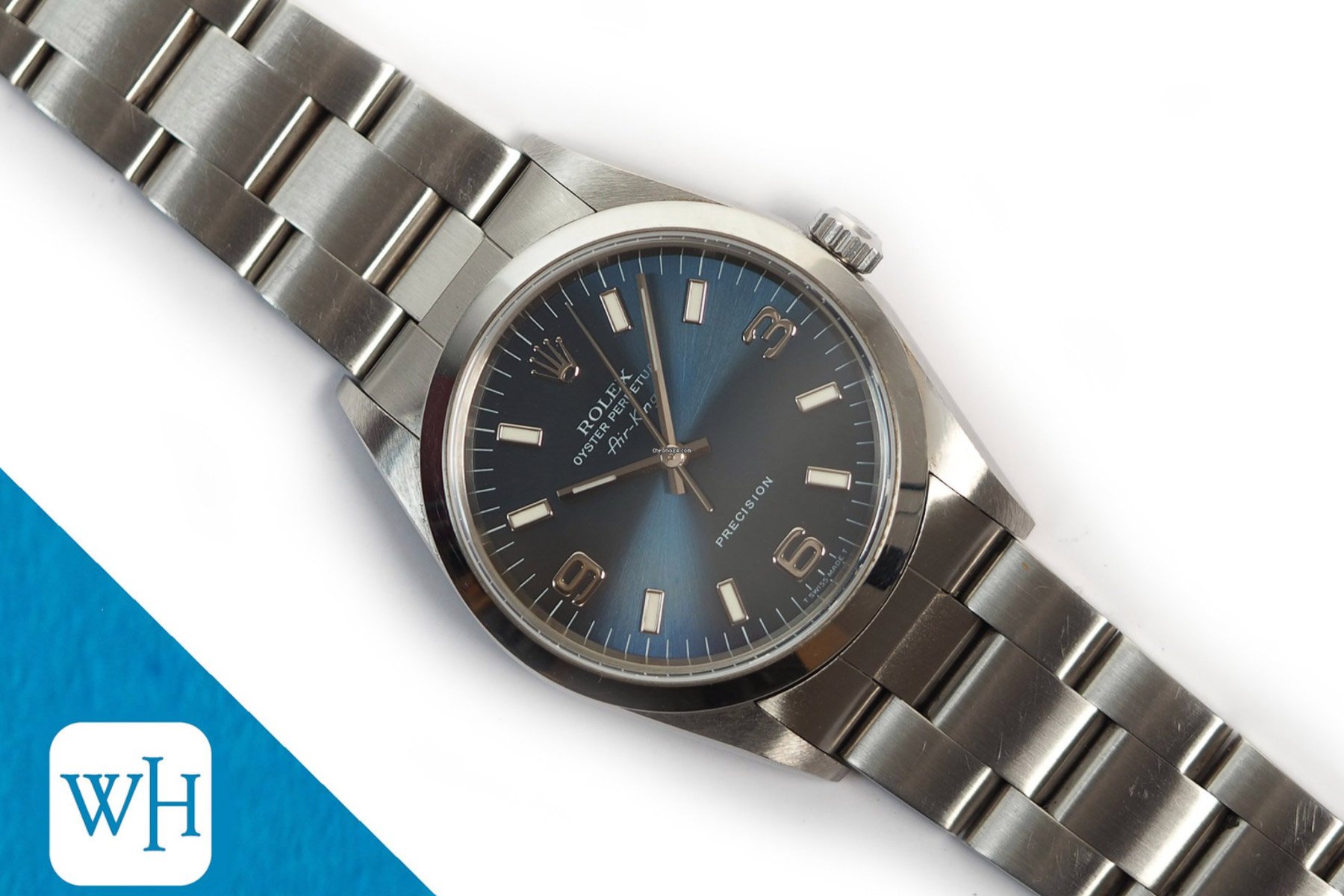Wrist Game or Crying Shame: Rolex Air-King 14000
Welcome back to Wrist Game or Crying Shame, the weekly serial where you get to play monarch. Let’s see if you’ll award the royal crown to the Rolex Air-King. But first…
Last week, I tried to present value to you in the form of a rare Breitling Superocean Chronoworks. It turns out that this rarity was caused by its initial price of nearly €40K! Even a reduction down to roughly €15,000 wasn’t enough to save this science experiment as it fell to a thundering 73% Crying Shame loss. That Breitling was once the brand’s veritable head of state, but was quickly deposed. Now let’s focus on a monarch with a far longer reign, the Rolex Air-King.
The Rolex Air-King debuted in 1945
Internet lore tells us that the Rolex Air-King debuted in 1945 and was so named to celebrate the brave and victorious WW2 British RAF pilots. Legend also has it that its large 34mm helped justify the “King” nomenclature. Interestingly, that case size would remain until 2014 when it was replaced after a year away in 2016 by the 40mm oddity that currently exists as reference 116900.
The Air-King is a peculiar piece
I still recall seeing the Rolex Air-King in boutique showcases and I always considered it to be a strange watch. Firstly, even as a young person in my teens, it looked little. I guess I wore 34mm Swatch watches at the time, but I always thought that a Rolex should command a bit more wrist real estate. So that was a bit off putting. The other thing that became abundantly clear from salespeople was the Air-King’s standing within the Rolex line. Clearly, this was the company’s entry level model.
Now, an entry level Rolex is still a Rolex. In my day, the reference 14000 had the in-house caliber 3000 automatic, a sapphire crystal, Twinlock crown and robust Oyster bracelet. The only visible demerit was the word “Precision” on the dial. In the case of the Air-King, that translates to “non-chronometer”. That wasn’t a real deal breaker in my mind, but I am sure it was for others.
Explorer looks
The other thing that struck me was that the Air-King looked an awful lot like an even more petite Explorer. During my formative years, Rolex offered the Air-King with a traditional stick index dial and also with a 3/6/9 index dial that aped the Explorer’s (it featured a Coronet at 12:00 in lieu of a triangle). However, on the junior model, it came in blue. Man oh man, I can’t tell you how many times I looked at that dial and wished that a blue Explorer existed only to come back to concerns over 34mm. Rolex has always done blue well. I say this as someone who often looks down at a similar period Datejust in the hue.
Changing perceptions
Because of its size and entry level status, the Air-King enjoyed stealth levels of popularity. If the size worked for the wrist, I’d guess it was often bought by people who simply wanted a damn good watch. Because of that, prices were often somewhat depressed compared to other, larger Rolex steel sports watches. But things have changed and I have several theories on this. Firstly, when a watch is an underdog it usually gains a small but loud fan base. These folks often carry the flag and shout from high upon the hills about how under-the-radar the Air-King or how “non Rolex” it is. Smaller watches are also more in now and they work well on the wrists of both sexes. And finally, a rising tide lifts all boats and we’ve seen all Rolex steel sports watches rise in value.
Today’s contestant
I discovered today’s reference 14000 Air-King on Chrono24. The watch and pictures are courtesy of Watchour SARL in Luxembourg and this one is gorgeous. The 14000 was introduced in 1989 and brought the aforementioned caliber 3000 automatic along with a sapphire crystal. It was produced with a few changes up until 2007. As per all Rolex watches during this period, it transitioned from tritium to LumiNova. The one we have today uses the old stuff and it’s starting to obtain a very light patina.
Now what’s evident here on this circa 2000 Air-King is that this is a watch-only sale and that means no boxes or papers. That’s a little annoying, but on the plus side, this looks absolutely unpolished. I own an Explorer from this era that’s never been touched and it’s absolutely consistent with this piece. Finding an untouched specimen is simply not that common. What surprised me a bit is the price and that comes in at €3,950. And while that doesn’t sound awful for a 20 year old Rolex in great condition, there’s one major obstacle in its way. The 36mm Rolex Explorer 14270 can be had for less than €1,000 more in decent condition. Things are never easy for the lowly Air-King.
So, now that I’ve shown you a lovely Air-King reference 14000 you need to decide whether this watch should reach the throne called your wrist or not. Is that lovely blue calling out to you or is it too small to see? I can ask these questions all day long, but let’s see what you think.
Rolex Air-King 14000


